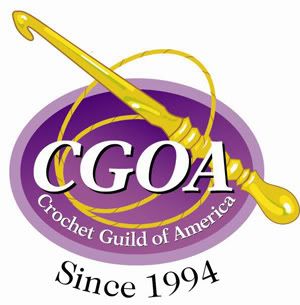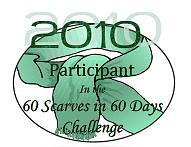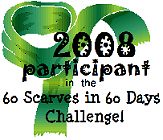Essential Crochet Treasures
Tuesday we had our Crochet in Public get-together in Borders. There is now a knitting group that meets there one Tuesday a month, and we've joined tables to create a big fiber arts fest in the middle of the Cafe. This week I think we had six tables. The knitters have a few great storytellers & we spend a lot of time laughing.
Since I've just spent a long day (had to get up early!) teaching math, I try to avoid crocheting that avoids too much focus & thinking. Sometimes I take a motif if it's not too complicated, meaning not written in vintage language. But frequently I use this time to visit with friends, talk new yarns and fibers, look at new magazines & books. This week I got seriously into (is that English?) the book I bought at Stitches East Market. It is titled: Essential Crochet Treasures: Crocheter's Historical Pattern Series Volume Four. This is an unabridged re-issue of an 1891 book by Butterick Publishing Company, originally titled The Art of Crochet.
Again, I'm amazed at how the "classic" crochet and the Tunisian stitches are interspersed in the stitches "how to". Tunisian is definitely not treated as a separate needlearts technique, it's not even treated as a sub-group of crochet. In this book, the stitches are called tricot instead of tunisian, but first there are basic stitches, such as chain, slip, double foundation, single, double, half-double, picot, and trebles; then there is the Tunisian Simple Stitch (TSS), also known as the Basic Afghan Stitch (BAS), here it is called Tricot Stitch. Then Tricot Stitch, in imitation of knitting; then the Knot stitch and Double Faced stitch, then a Basket Tricot. After this there are quite a few stitches all named Fancy Tricot! And some labeled "Stitch for an Afghan". Some I haven't heard before, but sound enticing, such as Mussel tricot, Knob tricot, and Striped stitch. (Notice that this Tricot or Tunisian stitch is not even labeled as tricot.) I would like to make swatches of all of these, number them according to the numbers in this book, then try to match the swatches to photos in several of the Tunisian books that I have.
While delving into this book on Tuesday, I had a pad of lined sticky notes (similar to a mini legal pad!) I used one paper to make a list of stitches that I wanted to swatch, one to make a list of doilies that I want to make, and another to make a list of edgings. Sometimes I worry that I spend a lot of time swatching, practicing new stitches and stitch patterns, and not enough time making projects. But then, the practice, and learning new things will pay off when I finally make a project, because it will be beyond the basics. Besides, I love researching and learning new things.
I've linked the title of this entry to this book on the Amazon site. Click on the title to read more, or to purchase the book for your crochet library.

















0 Comments:
Post a Comment
<< Home